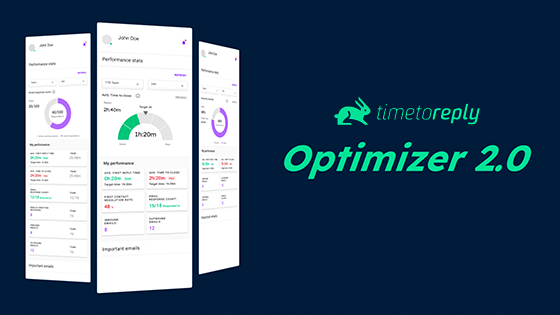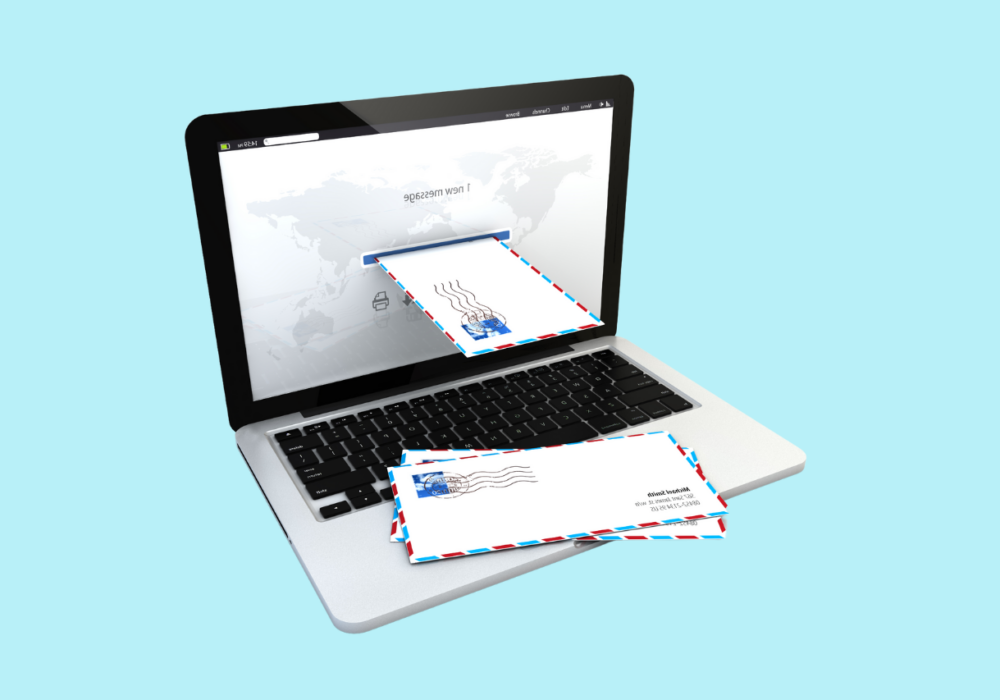Forget the allure of instant conversation that private messenger platforms offer. Email exchanges remain the best form of online business communication especially if you want to close a deal or sign a customer.
Email is not as vulnerable or susceptible to the distraction that descends on you when a notification suddenly pings into your consciousness. Its more thorough long-form kind of messaging gives a huge space for details, context, and the build-up of ideas. It reduces, if not totally eliminates, the confusion in private messenger where ‘tone’ can be misinterpreted or spontaneous arguments overlap.
Email analytics software goes a step further and shows you how you can tap the hidden wealth of data lying under all those email activities. It manages the flow of all the emails coming in and out. It can separate the most important messages that can affect your decisions from the not-so-urgent ones. It can teach your employees how to use email to make them more productive, instead of letting it slow them down.
Email analytics tools can cut through the overwhelming tides of messages you are getting. Used properly, they can even become instruments for efficient project and time management. It all begins with the data that they bring you. There are five strategies that you can leverage on.
The statistics do show that your employees can use assistance in handling their email management services. According to a 2019 Adobe survey, Americans spend five hours a day just checking on and replying to their email. Three hours are spent on office email, and the remaining two hours are allotted for the more personal ones.
Are your employees bogged down by all the emails have they been getting? Are they part of that alarming trend of inboxes that are 45% filled by spam? A diagnostic check can tell the average number of hours each one of them spends clicking on their inboxes. If those hours can be cut, they can be channeled to more productive tasks.
The first email activity time means the first time that your employee sends their email every single day. Your administrative assistant, for example, does it at 8:30 a.m. while your manager’s first ‘send email’ clicks at 10 a.m.
The last time, on the other hand, indicates the very last email they sent that day. In this case, your administrative assistant’s last email was sent at 5 p.m. while your manager’s happened around 10 p.m. An overview of both workers’ first and last activities will show the usual hour they clock in, and when they clock out.
Again, just using the above examples, the first and last activity times also reveal if your workers are still on the job during business hours. They can also point the after-office work schedule where they are still doing their office-bound duties. These indicators are very important, especially today when more and more personnel are working from home.
At the very least, they will differentiate the team members who regularly perform their duties, the ones who may be slacking, and the stellar few who go the extra mile to get the job done.
How many minutes does it take your employee to reply to their emails? What percentage of their emails get a response in 60 minutes, or half an hour? The data from your email productivity tools will let you see how quickly they make their first reply to an email. It can also average or summarize their total reply time within a period of time, such as a week or a month.
Response time is important because it gauges how efficient your employees are in managing their email communication time. It can also flag bottlenecks in corporate communications processes where delayed responses did stall projects and work phases.
Moving forward, you can use the results to coach your employees, and help them improve their communication skills. A closer real-life conversation might even iron out long-festering resentments. For example, the content writer’s average unusually long 30-minute response time to the IT manager was triggered by an angry argument in one departmental meeting. Once those issues have been threshed out, collaboration can continue.
The beauty of email is that it can show the history of a conversation seamlessly and thoroughly. There are no jumps or gaps caused by the lack of synchronization, which happens occasionally in private messenger.
You can trace an entire customer journey launched by the best email marketing software you had installed: from the very first email sent to the client, the first time a proposal was emailed, the series of revisions made to accommodate the client’s wishes over a period of weeks, and finally to the recently attached signed contract.
However, because of the hundreds of emails you receive every day, tracking entire conversations can be difficult and taxing. Fortunately, the email analytics software can monitor them and make them available for your review. No need for you to keep scrolling down your inbox just to read it. Because of this feature, the chances of losing them are also minimized.
This capability will also allow you to check which email conversations have stopped abruptly and at which point in the online dialogue. Afterward, you can restart it and resume communications with the client at the other end of the email. You will also know what to say in case you do find that the client had been waiting for some time.
Now that you know how to program your email analytics software to measure and perform productivity, you can apply it to entire groups such as teams and departments. The software can classify your individual staff into the groups where they belong. It can run an analysis on that group’s collective performance when it comes to volume of email, response time, email activity hours, and the quality and length of email conversations, among others.
The overall analysis can highlight how email activity has impacted your business. For example, some clients stay on with you because of the rapid email response time of your customer service group. On the other hand, the lukewarm response of your sales team to inquiries has clearly cost you potential revenues. The revelations just might result in long-overdue calls to action or a drastic change in processes.
Email remains the most useful arsenal in your communications processes. Email analytics software can give you the data to engage both your workforce and your client base. It can become a tool to monitor performance, productivity, and their inevitable influence on the bottom line. It is one huge and seemingly unlimited platform that stores and sustains those priceless online conversations that can make your company succeed.



Trusted by high-performing inbound sales teams and customer-facing teams globally.
Close more deals and delight more customers with the faster, smarter, deeper email analytics and performance optimization software that works straight from your team’s inbox.